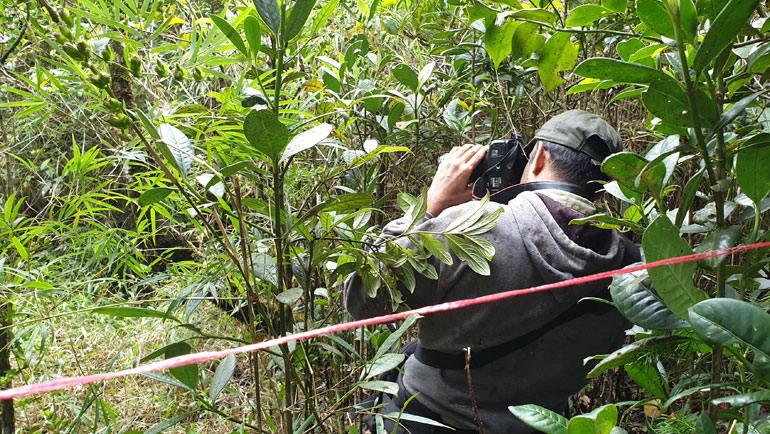- Motorola Launches moto g96 5G with Segment-Leading Features Including 144Hz 3D Curved pOLED Display
- Chetu Hosts Successful Seventh Annual Tree Plantation Drive in Noida, Reaffirming Commitment to a Greener Tomorrow
- White Sound Ibiza Announces Trends in sound and lighting for dream weddings in Ibiza
- Union Minister of Jal Shakti, C.R. Patil chairs a High-Level Review Meeting to discuss Smart River Management
- Samsung Solve for Tomorrow Sparks a Wave of Young Innovators in Tripura
- BFSI Industry Report 2025 reveals Only 31% of the BFSI workforce feel prepared for Digital Transformation
- Indian Rug Manufacturer Expands Global Reach with Bespoke Carpets for Hospitality Projects
- Ecodeck Grid Ltd Launches Durable, Eco-Friendly Plastic Grid Driveway Solutions in Nottinghamshire
- Girls Who Print Launches India Chapter at PrintExpo Chennai to Champion Industry Progress and Community Growth
- Artsyl Technologies Unveils InvoiceAction 7.2 with Advanced AI Capabilities and Enhanced ERP Integration
- Conrad K Sangma, Chief Minister of Meghalaya, unveils 134th Indian Oil Durand Cup 2025 in Shillong
- Silver Circle Pets Unleashes a Greener, More Luxurious Shopping Experience for UK Pet Lovers
- Medical Fair Thailand 2025 Set to Showcase Innovations Transforming Global Healthcare
- The Belgian Waffle Co repositions National Waffle Day with a quirky pre-buzz campaign #WhatsYourDrill
- Continental White Paper Explores Key Technologies for Connected Mobility
 Mail to a Friend Mail to a Friend |
|
     |
Protecting the Future of Sri Lanka’s Rainforests in a Changing Climate

Tropical rainforests contain exceptionally high levels of endemism and species richness and are globally important areas of biodiversity. Climate change is threatening to collapse these complex ecological networks leading to mass extinctions and the failure of rainforest ecosystems services that are vital to life on Earth. In November 2018 a team of multidisciplinary scientists led by Prof. Janendra De Costa (Department of Crop Science, Faculty of Agriculture, University of Peradeniya) kicked off a landmark study at Dilmah?s Queensberry Tea Estate to better understand the impacts of climate change on Sri Lanka?s rainforests in partnership with the National Science Foundation and Department of Forest Conservation.
The study has brought together a diverse group of scientists from the Rajarata University, Sabaragamuwa University, University of Peradeniya, the University of Colombo, and the Department of Forest Conservation whose specialities range from plant science and zoology to sustainable tourism. This team of researchers has set out to measure key rainforest characteristics like plant, reptile, and amphibian diversity, plant physiology, and tree canopy structure in multiple rainforests located at many different elevations across the island. This data will then be used by them to predict the extent of damage to Sri Lanka?s rainforests over the upcoming years due to climate change.
How climate change is expected to affect our rainforests
Rainforest species are connected by intricate food webs where often one species is completely reliant on the existence of just a single or few other species. Climate change is expected to disrupt these delicate networks by changing weather patterns and other environmental cues used by plants to regulate their flowering and fruiting cycles. These changes will intern strip many species of animals, like pollinators and primates for example, of a source of food and shelter for certain parts of the year resulting in species declines that will ripple through the entire interconnected rainforest ecosystem.
Increasing droughts and average temperature are expected to increase the risk of forest fires and reduce the ability of plants to remove carbon dioxide from the environment. Scientists predict that these changes may drive what?s been dubbed as the ?savannisation? of rainforests where lush rainforest vegetation is replaced by dry savanna grasses that are prone to bushfires and likely to act as a source of carbon dioxide rather than a ?sink?.
The Late Holocene Rainforest Crisis
The ?Late Holocene Rainforest Crisis? took place 2600 years ago and is an example of how swiftly and fluidly climate change can destroy rainforests. During this crisis, climate change drove the conversion of massive areas of rainforests in central Africa to dry Savanna grasslands. The rainforests bounced back approximately 600 years later when conditions readjusted.
Scientists are now beginning to think that this change may be linked with human activities in the region at that time. During this period large groups of people are thought to have migrated to central Africa and engaged in pearl millet farming, and iron metallography. The advent of large-scale oil palm cultivation and manufacturing is also linked to this region and time frame. The resurgence of the rainforests 600 years later has been associated with the decline of these populations.
What these changes hold in store for us
Climate change coupled with runaway habitat destruction caused by urbanisation and agricultural land use will result in the failure of critical rainforest ecosystem services. As a result, our freshwater systems will grow increasingly degraded, our soils will lose their nutritional value, rainfall patterns will become increasingly sporadic, ocean currents will shift and slow down further upsetting climatic conditions, air quality will plummet, and disease and infection will spread spurred on by rising temperatures and weather-related disasters that will become increasingly common. This will trigger a worldwide mass extinction.
A whopping 30% of our global carbon dioxide emissions are absorbed by rainforests. Without them, climate change will continue at accelerated rates intensifying these impacts.
What the study hopes to achieve
A dearth of scientific data from developing countries in the tropics is preventing the understanding of the scale and speed at which climate change is damaging the world?s rainforests. The study will contribute to this global issue and shed light on how Sri Lanka?s rainforest ecosystems are expected to react to climate change over the upcoming decades. This information will enable scientists to design better management plans and establish nature corridors that can protect Sri Lanka?s species-rich rainforests and improve their resilience to the pressing threat of climate change.
Permeant rainforest plots have been identified for the study in locations such as the Horton Plains, Sinharaja and Pidurutalagala rainforests in elevations that span from 100m above sea level to more than 2000m. These plots have been selected to represent the diverse environments of Sri Lanka?s rainforests and mimic the increasing temperature gradient from high to low elevations. The Rilagala Forest Reserve adjoining the Dilmah Conservation Climate Change Research and Adaptation Centre at Queensberry Tea Estate was selected as one of these locations.
The study will measure plant respiration and photosynthesis rates in these plots and estimate the ability of Sri Lanka?s rainforests to continue fixing carbon dioxide in the face of increasing droughts caused by climate change. The data gathered through the study will also be used to design models that in combination with climate data can predict the changes our rainforests will undergo because of climate change.
This work will not only lay the foundation for much needed further research on climate change and biodiversity in the country but also provide young undergraduate and postgraduate scientists with studentship opportunities in the increasingly pertinent field of climate change. Currently, the project has facilitated two postgraduate studentships for students from Jaffna University and Sabaragamuwa University.
Dilmah Conservation is the environmental arm of the MJF group and was founded in 2007 as an extension of Dilmah?s commitment to ensuring that all its operations are bound by a respectful and sustainable interaction with the natural environment.
Company :-Dilmah Tea
User :- Roger Brendon
Email :-dilmahteaom@gmail.com
Phone :-94-11-4822000
Mobile:- -
Url :- https://www.dilmahtea.com/


_(1)1_thumb.jpg)








